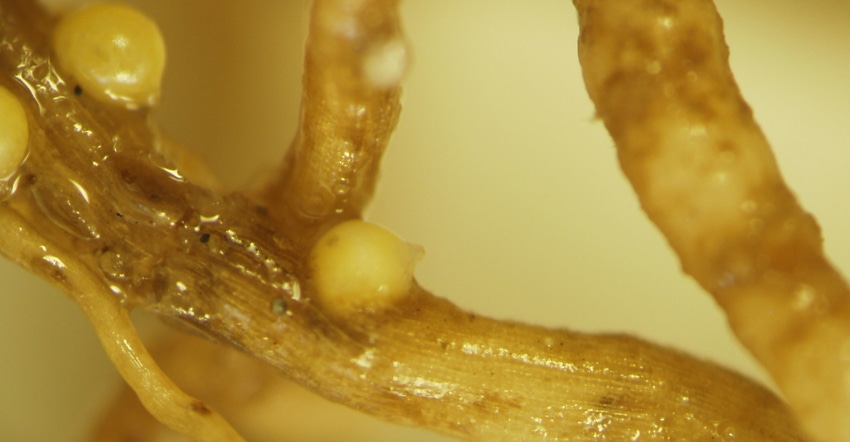December 1, 2022

I took soybean cyst nematode soil samples. Despite no symptoms, there are low levels in one field, moderate levels in two others and high levels in a fourth. How do I use this information?
The Indiana certified crop adviser panel answering this question includes Danny Greene, agronomist with Greene Crop Consulting Inc., Franklin; Marty Park, sales agronomist with Gutwein Seed Services, Rensselaer; Jesse Uebelhor, agronomist with Superior Ag, Jasper; and Shaun Casteel, Purdue Extension soybean specialist.
Greene: Always keep an eye on areas that become stunted and yellow earlier than the rest of the field. In these areas, consider spot-testing to compare with a nearby area of good production to make sure SCN doesn’t increase in these spots.
Your low-level field could be flexible for all rotation options. The moderate fields should be rotated regularly with a non-host crop like corn. The high-level field should rotate away from soybeans, and when in soybeans, use a variety with Peking resistance rather than 88788.
Additionally, with moderate or high levels of SCN, consider SCN seed treatments. These have become more popular and effective through several different modes of action. They’re worth looking into once you find SCN levels that need managed.
Park: Develop a strategy for the future. It might include crop rotation approaches, seed variety/SCN resistance choices, seed treatment choices, winter annual weed management if they’re SCN hosts and implementation of sanitation when changing fields. Consider a longer corn rotation on the field with high levels.
Uebelhor: Look at your crop rotation and consider planting more corn or other non-host crops in these fields. Plant corn in the field with high levels of cyst nematodes. Look at variety selection for fields with low and medium cyst nematode levels. Many varieties carry the PI88788 source of resistance. On fields with higher levels, consider looking into varieties with Peking resistance.
Casteel: Soybean cyst nematode is one of those pests that can go unnoticed for a long time. The first step in management is knowing your numbers. Track them over time to see if the population is increasing, decreasing or remaining constant. If populations are increasing or a recent sample was high, submit samples to determine the HG type. In other words, you’re requesting more information to determine levels of resistance present so you can follow up with management decisions.
Crop rotation and variety selection are your best tools. The field with moderate levels should be planted with a variety that has cyst resistance. Monitor with soil samples.
Within the PI88788 resistance spectrum, the level of protection can vary. Ask your seed dealer for more information on field performance. At a minimum, rotate varieties even if they have the same PI88788 resistance, because the reduction in cyst population can vary. More and more varieties are available with Peking resistance, which is needed to rotate the varietal resistant sources, especially on the high cyst populations.
This approach is like weed control or plant disease management as we rotate modes of action and/or overlap different modes of action. A few other varietal resistant sources are available, such as CystX and Cloud. Seed treatments are available and have some efficacy depending on the populations present. A multiple-prong approach is definitely needed.
You May Also Like




